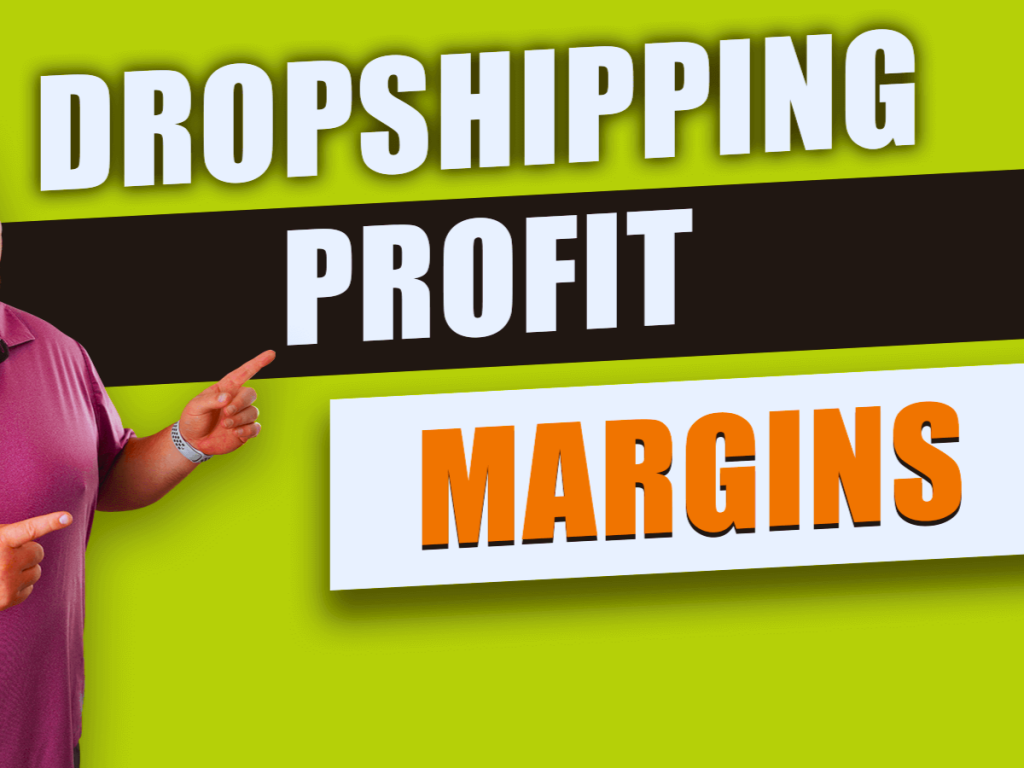Drop Shipping in 2025: Latest Trends, Regulations & Profit Margins Explained
The world of drop shipping is evolving faster than ever in 2025, shaped by new technologies, stricter rules, and changing shopper habits. For entrepreneurs, understanding these shifts is key to staying competitive. This guide breaks down the latest trends, regulatory updates, and strategies to boost profit margins in today’s drop shipping landscape.
Latest Trends Reshaping Drop Shipping
AI-Driven Automation and Hyper-Personalization
Artificial intelligence (AI) is no longer a luxury in drop shipping—it’s a necessity. Tools like SellTheTrend and Dropshipping Copilot use AI to track market trends in real time, predicting which products will go viral on platforms like TikTok or Instagram. For example, AI can spot a rising trend in “smart garden kits” within days, letting drop shippers list these products before competitors catch on.
AI also streamlines daily tasks: automating order processing, updating inventory levels, and even handling customer service via chatbots. These bots can answer questions 24/7, resolve shipping issues, and suggest related products—boosting sales by 20–30% by keeping shoppers engaged.
Hyper-personalization is another AI-powered trend. Drop shipping stores now use customer data to tailor recommendations. A store selling fitness gear, for instance, might suggest resistance bands to someone who bought yoga mats, creating a more personalized shopping experience that encourages repeat buys.
Niche Markets and Sustainability Focus
Gone are the days of selling generic “everything” stores. In 2025, successful drop shipping thrives on niche markets. Micro-niches like “eco-friendly pet toys for small dogs” or “portable cold brew makers for campers” attract loyal customers and face less competition. These focused niches often yield profit margins of 30–50%, compared to 10–20% for broad, saturated markets.
Sustainability is driving purchasing decisions more than ever. Shoppers now check for eco-friendly packaging, recycled materials, and ethical sourcing before buying. Drop shippers who partner with suppliers holding certifications like GOTS (Global Organic Textile Standard) or FSC (Forest Stewardship Council) stand out. For example, a store selling reusable food wraps made from beeswax can charge 20% more than generic alternatives, as 65% of shoppers say they’ll pay extra for sustainable products.
Social Commerce and Viral Marketing
Social media isn’t just for advertising anymore—it’s a sales channel. Platforms like TikTok Shop and Instagram Shopping let drop shippers sell directly through short videos or live streams. A 15-second TikTok showing a “magic” cleaning sponge removing tough stains can go viral, driving thousands of orders in days.
Live-stream shopping is also booming. Sellers demonstrate products in real time, answer questions, and offer flash discounts—creating urgency that pushes viewers to buy immediately. A recent survey found that 40% of drop shipping sales on social platforms now come from live streams, up from 15% in 2023.

Hybrid Fulfillment Models
Traditional drop shipping—where suppliers handle all shipping—often struggles with slow delivery times and limited quality control. In 2025, many brands are adopting hybrid models: holding inventory for top-selling products while drop shipping slower-moving items.
For example, a drop shipper selling kitchen gadgets might stock their best-selling silicone food storage bags in a U.S. fulfillment center (using services like ShipBob), ensuring 2–3 day delivery. Meanwhile, they continue drop shipping niche items like avocado slicers from overseas suppliers. This mix cuts shipping times for popular products, reduces cart abandonment, and boosts profit margins by 10–15% through bulk buying discounts.

Regulatory Updates Every Drop Shipper Must Know
Cross-Border Tax and VAT Rules
Tax compliance has grown more complex in 2025, with countries tightening rules to prevent lost revenue.
- EU: The One-Stop Shop (OSS) system requires drop shippers to charge VAT based on the customer’s country, not the supplier’s location. For example, a sale to a customer in Germany must charge German VAT (19%), even if the supplier is in China. Failing to comply can result in fines up to €10,000.
- U.S.: States like California and New York now enforce “economic nexus” rules: if you make over $100,000 in sales or 200 transactions in a state, you must collect and remit sales tax. Platforms like Shopify can automate this, but sellers must register for tax IDs in applicable states.
- Brazil and India: Brazil now mandates that all international shipments include the buyer’s CPF/CNPJ tax ID on customs forms; missing this can delay deliveries by weeks. In India, drop shippers earning over ₹40 lakh (~$48,000) annually must register for GST, even if they don’t hold inventory locally.
Data Privacy and Consumer Protection
Laws like the EU’s GDPR and California’s CCPA now apply strictly to drop shipping stores.
- Data collection: You must clearly ask for consent to store customer data (like emails) and let shoppers delete their information easily. Fines for non-compliance can reach 4% of global revenue (up to €20 million for large brands).
- Product claims: Exaggerating product benefits (e.g., “this supplement cures acne”) can lead to lawsuits. The FTC in the U.S. and ASA in the UK now crack down on false advertising, with penalties including forced refunds and banned ads.
Supply Chain Transparency
Regulators are pushing for clearer supply chains to combat unethical practices.
- Labor standards: Drop shippers must verify that suppliers don’t use child labor or unsafe factories. Tools like Sedex help audit suppliers, and brands that fail to comply risk being blacklisted by major platforms.
- Environmental disclosures: The EU’s Corporate Sustainability Reporting Directive (CSRD) requires drop shippers with over €40 million in revenue to publish reports on their suppliers’ environmental impact. This includes carbon emissions and waste from packaging.
Profit Margins in 2025: How to Maximize Earnings
Average Margins and What Drives Them
In 2025, average drop shipping profit margins range from 15–45%, depending on the niche and strategy.
- Low-margin niches: Electronics and fast fashion often see 15–25% margins due to high competition and price sensitivity.
- High-margin niches: Specialized products (e.g., medical-grade face masks, custom pet portraits) can hit 30–45% margins, as they serve specific needs with less competition.
Key drivers of higher margins include:
- Niche focus: Avoiding overcrowded markets.
- Branding: Adding custom packaging or logos to generic products (private labeling) lets you charge 20–30% more.
- Efficient suppliers: Working with suppliers who offer bulk discounts or lower shipping fees.
Strategies to Boost Margins
- Leverage bulk buying for top sellers: Use sales data to identify your 3–5 bestsellers, then order larger quantities from suppliers. This can cut per-unit costs by 10–15%.
- Upsell and cross-sell: AI tools can suggest complementary products (e.g., “buy this phone case with your new screen protector”). This increases average order value by 15–20%.
- Optimize shipping costs: Negotiate with suppliers for discounted rates, or use regional fulfillment centers to reduce international shipping fees. For example, storing products in a UK warehouse for EU customers cuts delivery costs by 30%.
- Reduce returns: Clear product descriptions, high-quality images, and size charts lower return rates (which eat into margins). A 5% drop in returns can boost net profits by 10%.
FAQ
Is drop shipping still profitable in 2025?
Yes, but it requires more focus. Niche markets, sustainability, and AI tools are key to profitability. Brands that adapt to regulations and focus on customer experience can still earn strong margins.
Do I need to hold inventory to succeed in 2025?
Not entirely, but a hybrid model helps. Holding inventory for top sellers improves shipping times and margins, while drop shipping slower items reduces risk.
How do new regulations affect small drop shippers?
Smaller sellers can use platforms like Shopify or WooCommerce to automate tax and compliance. Many tools now handle VAT calculations and data privacy checks, making it easier to stay legal.
What’s the biggest trend to watch in 2025?
Social commerce—selling directly through TikTok, Instagram, or live streams. It’s growing faster than traditional e-commerce and offers low-cost ways to reach buyers.
How can I compete with larger drop shipping brands?
Focus on niche markets they ignore. A small store selling “vegan leather dog collars” can outperform a big brand with a broad pet supply range by catering to a specific audience.


